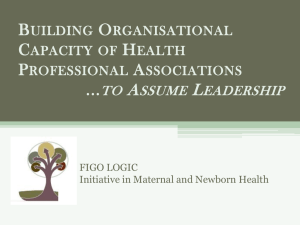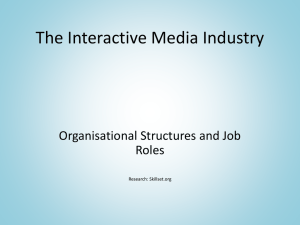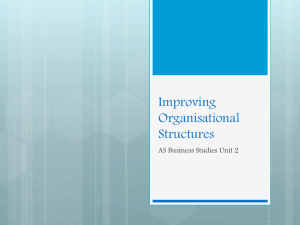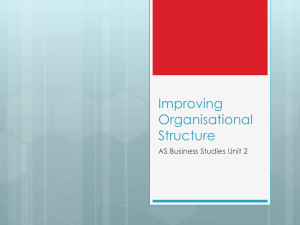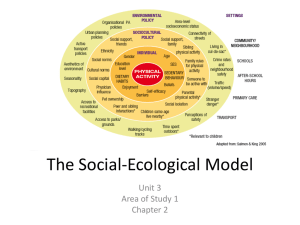bdu_ohcw_2014-02_background_presentation
advertisement
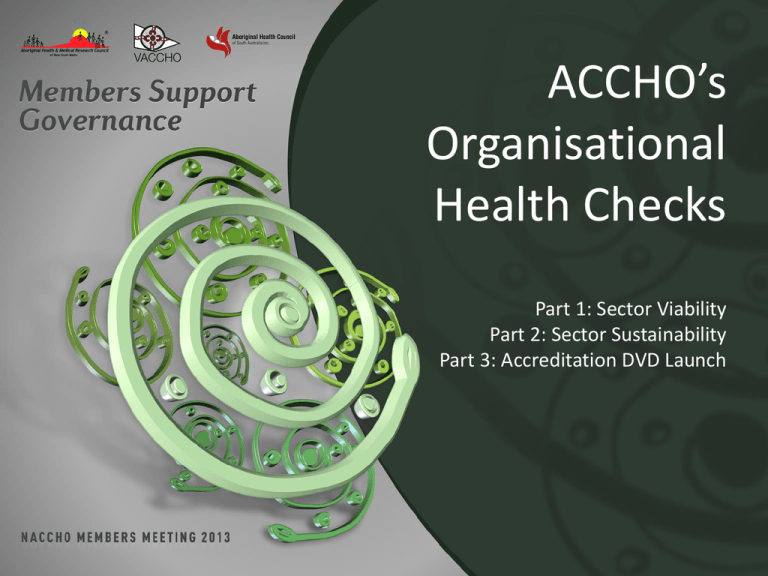
ACCHO’s
Organisational
Health Checks
Part 1: Sector Viability
Part 2: Sector Sustainability
Part 3: Accreditation DVD Launch
ACCHO’s
Organisational
Health Checks
Part 1
Sector
Viability
Artwork Meaning
The Symbols represents River and
Tributaries with the large symbol
being the ACCHSs and the other
size symbols represents the
system that operate to make the
ACCHSs function (or flows).
In Victoria the eagle Bunjil is the creator and in
this artwork Bunjil is looking after and
protecting the river, the provider of life.
The Artwork is an original design created by
Rochelle Patten, a Yorta Yorta woman from
Cummeragunja, NSW.
These symbols (systems) within ACCHSs can be IT, HR,
Finance, Governance, Clinical, and Programs.
The single symbols represent waterholes that occur
independently and indirectly that contributes to the overall
operations or flow of ACCHSs.
If these symbols (tributaries) are not working or flowing then
they impact on the operation or flow of the larger symbol
(River - ACCHSs).
Project: Organisational Health Check
Partnership
Consideration
Concept
Points
Project: Partnership
Affiliates
• Skills Development &
Transfer
• Resource Development
& Modification
• Peer Learning &
Mentoring Support
• Capabilities List
Member Services
• Facilitation Support
Projects
• Risk Assessment
• Mock Audits / Reviews
• On-site & Off-site
• Peer Learning &
Mentoring Support
• Capabilities List
Project: Concept
Risk Assessment
• Management Structures
• Management Systems
• Control, Monitoring &
Reporting
• Financial Management
Accreditation
•
•
•
•
Clinical
Organisational
State & Territory Standards
Program Specific
• Legal Requirements: Constitution, Regulatory & Legislative
Service Organisational Health Check:
Management Systems
•
•
•
•
•
•
•
•
•
•
•
•
•
Organisational & Clinical
Cultural Framework &
Integrity
ACCHS’s Governance
Principles
Legal Duties
Statutory Requirements
Reputation
Political Environment:
Local, State and National
Risk Management
Compliance Management
Planning & Evaluation
Policies & Procedures
Monitoring
Trends Analysis
Reporting
•
•
•
•
•
•
•
•
•
Risk Management
Cultural Framework &
Integrity
Influences: External &
Internal
Risk Appetite
Risk Register
Trends Analysis
Monitoring
Reporting
Policies & Procedures
Evaluation
•
•
•
•
•
•
•
•
•
•
•
Compliance Management
Cultural Framework &
Integrity
Policies & Procedures
Community Obligations
Legal Requirements
Regulatory
Requirements
Constitutional
Requirements
Funding Agreement
Requirements
Compliance Action Plan
Governance Compliance
Register
Reporting
Evaluation
•
•
•
•
•
•
•
•
•
•
•
•
•
Financial Management
Cultural Framework &
Integrity
Charts of Accounts
Financial Investment
Australian Accounting
Standards
Delegations Matrix
Purchasing & Review of
Providers
Asset Management
Payroll
Planning
Policies & Procedures
Trends Analysis
Reporting
Evaluation
Service Organisational Health Check:
Management Systems
Human Resource Management
• Cultural Framework &
Integrity
• Recruitment & Retention
• Licensing & Credentialing
• Staff Wellbeing
• Work Plans
• Appraisals
• Training
• WHS & OHS
• Planning
• Policies & Procedures
• Monitoring
• Trends Analysis
• Reporting
• Evaluation
•
•
•
•
•
•
•
•
•
•
Planning & Evaluation
Cultural Framework &
Integrity
Strategic Planning
Processes
Operations Planning
Processes
Trends Reports:
Management Systems
Influences: External &
Internal
Policies & Procedures
Monitoring
Trends Analysis
Reporting
Evaluation
•
•
•
•
•
•
•
•
•
•
•
Quality Management
Cultural Framework &
Integrity
Policies & Procedures
Feedback
Complaints
Incidents
Continuous
Improvements Register
Audit Schedules
Document Review
Trends Analysis
Reporting
Evaluation
•
•
•
•
•
•
•
•
•
•
•
•
•
•
Information Management
Cultural Framework &
Integrity
Policies & Procedures
IT Security & Safety
IM Protocols
ICT Audit Tool
Reporting Requirements
Training & Development
Licensing & Credentialing
Reviewing of SLA
Asset Register
Governance Compliance
Register
Risk Management
Trends Analysis
Document Management
Project: Consideration
Affiliates
•
•
•
•
•
Resources & Tools
Capacity
Financial
Delivery Models
Business Models
Members
•
•
•
•
•
Commitment
Capacity
Benefits
Sharing Knowledge
Investment
ACCHO’s
Organisational
Health Checks
Part 2
*Sector
Sustainability
ACCHO Sector: Long Term Sustainability
What is our Plan?
Why do we need
a Plan?
What are the
Opportunities
& Risk
Sectors Views &
Next Steps
Affiliate Implementation Plan
Plan : Develop Service Delivery & Business Model
Capacity: Identify & Deliver Training {Internal / External}
Resources: Organisational Health Check {On-line and Folder}
Talk: Members & Stakeholders {Communication Strategy}
Act: As per Members Service Health Plan
Check: KPI’s – Measure, Analysis & Improve
Members Implementation Plan
Organisational Health Check: Self Assessment {Supported or Not}
Develop Work Plan: Priorities, Responsibilities & Process
Identify Needs: Capacity Requirements {Current & Enhanced}
Build Capacity: Peer Learning / Mentor Support {Affiliate / Member}
Evaluate: Monitor, Measure & Report Progress
ACCHO Sector: Long Term Sustainability
1.
National Working Group
•
2.
3.
4.
5.
Valuing Diversity and Independence
Research Partners
Evaluation: Evidence Based
Investors
Advocates
Questions to Members
•
Affiliate
Q1}
Do we need a model
for viability &
sustainability {Y/N}
Do we need an
Organisational
Health Check {Y/N}
If Yes: What does
Affiliates need to do on
behalf of the Sector
Q2}
Q3}
Members
Q1}
Q2}
Q3}
Do Services need to
measure & monitor
their health {Y/N}
Can the Organisational
Health Check measure
& monitor your service
health status {Y/N}
If Yes: How can
ACCHO’s support their
Affiliate?


